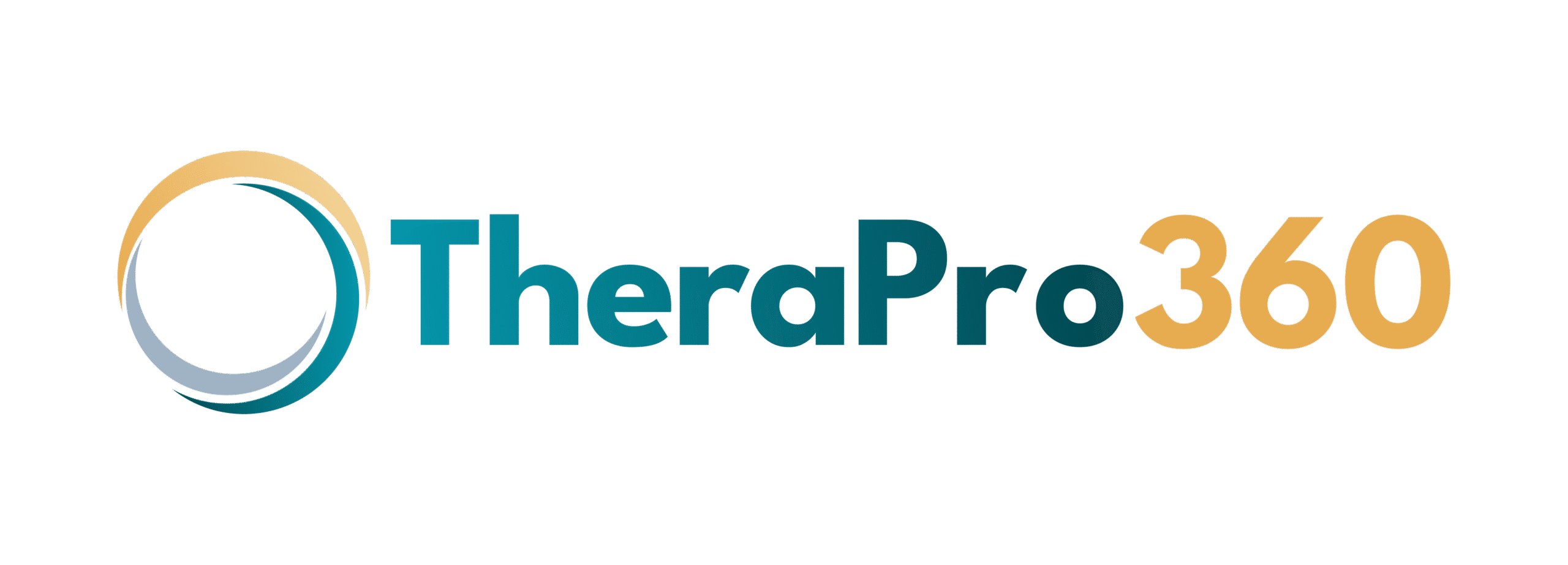
Blog
Building Better Patient Relationships Through Online Portals and Secure Messaging
Expert web designers ensure the site and software is easy to use.Building Better Patient Relationships Through Online Portals and Secure Messaging
The quality of the relationship between a therapist and their patient is the bedrock of successful speech therapy. Trust, clear communication, and active engagement from patients and their families are critical for achieving clinical goals. In the past, this relationship was built almost entirely within the four walls of the clinic. Today, however, patients and caregivers expect the same level of digital convenience and accessibility from their healthcare providers that they get in every other aspect of their lives.
Relying on phone calls, paper forms, and unsecured email for communication creates friction and risk. It leads to missed messages, administrative delays, and potential HIPAA violations that can erode patient trust. For speech therapy practices, failing to embrace modern communication tools is a missed opportunity to strengthen patient relationships, improve outcomes, and streamline operations.
This guide will explore how patient portals and secure messaging—key features of modern practice management software for speech therapists—can transform your patient engagement strategy. We will cover the essential features to look for, the significant benefits for your practice and your patients, and the steps to successfully implement these tools while maintaining strict HIPAA compliance.
Why Patient Relationships Matter in Speech Therapy
A strong therapeutic alliance is more than a “nice-to-have”; it’s a clinical necessity. In speech therapy, where progress often depends on consistent practice and caregiver involvement, the quality of the relationship directly influences outcomes, engagement, and the long-term success of the practice.
The link between communication and therapy outcomes
Effective communication is the cornerstone of speech therapy, not just during sessions but outside of them as well. When parents and caregivers feel connected and informed, they are better equipped to support the therapy plan at home. A therapist who can easily share a resource, answer a quick question, or provide encouragement between sessions reinforces learning and accelerates progress. Conversely, poor communication leads to confusion about home practice, frustration, and slower attainment of goals.
How accessibility impacts patient engagement and retention
Patients and their families are more likely to stay engaged with therapy when they feel heard and supported. Accessibility is key. If a parent has a question about an upcoming appointment or a new billing statement, being able to get a quick, secure answer without playing phone tag makes a world of difference. When communication is difficult, patients can become disengaged. This disengagement often leads to missed appointments and, eventually, patient dropout, which not only halts clinical progress but also hurts the practice’s revenue.
The shift toward digital communication in healthcare
The consumer world has trained us to expect instant access and self-service options. We bank online, book travel online, and shop online. This expectation has firmly carried over into healthcare. Patients want the ability to schedule appointments, pay bills, and communicate with their providers on their own time, from their own devices. Practices that fail to meet this expectation risk being seen as outdated and difficult to work with. Offering modern, digital communication channels is no longer an optional perk; it’s a competitive necessity.
The Challenges of Communication Without Digital Tools
Sticking to traditional communication methods like phone calls, voicemails, and paper mail creates significant operational challenges and compliance risks for a modern speech therapy practice.
Missed messages and scheduling confusion
The classic game of phone tag is a massive time-waster and a primary source of frustration for both staff and patients. A front desk employee leaves a voicemail for a parent, who calls back and leaves a voicemail in return. This inefficient back-and-forth can take days and often results in miscommunication about appointment times, leading directly to no-shows or last-minute cancellations. Important messages about a child’s progress or a question about a home exercise can get lost in the shuffle.
The risk of non-compliance with unsecured communication
In an effort to be helpful, well-meaning staff or therapists might be tempted to use convenient but non-secure channels like personal email or standard text messaging to communicate with patients. This is a serious HIPAA violation. Sending any Protected Health Information (PHI)—which includes everything from a patient’s name linked to a diagnosis to scheduling details—over an unencrypted channel exposes the practice to massive fines and reputational damage. Without a dedicated, secure platform, your practice is constantly at risk of a data breach.
Limited visibility for patients on progress and scheduling
In a manual system, patients have very little visibility into their own care. They don’t have an easy way to check their next appointment time, review their payment history, or see a summary of their child’s progress. To get this information, they have to call the office, which adds to your administrative team’s workload. This lack of transparency can make patients feel disconnected from the process and unsure of their status, weakening their engagement.
What Is a Speech Therapy Patient Portal?
A patient portal is a secure, online website or application that gives patients 24/7 access to their health information and a suite of self-service tools. It acts as a digital front door to your practice. When integrated within a practice management software for speech therapists, it becomes a powerful hub for communication, engagement, and administration.
Key features that empower patients and therapists
A well-designed patient portal includes a range of features that empower both sides of the therapeutic relationship.
For Patients & Caregivers:
- View and request appointments.
- Complete intake paperwork and consent forms digitally.
- Send and receive secure messages with their therapist.
- View and pay bills online.
- Access educational materials or home practice exercises shared by their therapist.
- Review summaries of their progress notes.
For Therapists & Staff:
- Securely share documents and resources with patients.
- Communicate efficiently without relying on phone calls.
- Reduce administrative workload by allowing patients to self-serve.
- Track all patient communication in one central, HIPAA-compliant location.
How portals streamline documentation, billing, and communication
An integrated portal ties together the clinical, financial, and administrative aspects of the patient journey.
- Documentation: A parent can fill out an intake form online, and that data automatically populates the patient’s chart in the EMR, eliminating manual data entry and errors.
- Billing: A patient can view their statement, see exactly what insurance paid, and pay their remaining balance online with a credit card, which dramatically speeds up patient collections.
- Communication: All messages sent through the portal are automatically saved to the patient’s record, creating a complete and compliant communication history.
Why integrated portals outperform standalone tools
While standalone patient portal products exist, they lack the power of a portal that is fully integrated with your practice management software. An integrated portal pulls real-time information directly from your scheduling, billing, and EMR modules. A standalone tool requires clunky, manual data syncing, which creates delays, risks errors, and ultimately defeats the purpose of creating an efficient, seamless experience.
How HIPAA Secure Messaging Strengthens Patient Trust
Trust is the currency of healthcare. Patients need to feel confident that their sensitive health information is being protected. HIPAA-compliant secure messaging provides this assurance, allowing for open and efficient communication without compromising privacy.
Understanding HIPAA compliance in speech therapy communication
The Health Insurance Portability and Accountability Act (HIPAA) requires healthcare providers to implement safeguards to protect PHI. Standard communication channels like SMS, personal email (Gmail, Yahoo), and social media messengers (Facebook Messenger, WhatsApp) are not HIPAA-compliant. They lack the necessary end-to-end encryption, access controls, and audit trails required by law. Using them to discuss patient information is a direct violation.
Protecting PHI while improving accessibility
Secure messaging solves this dilemma. It provides the convenience of digital messaging within a closed, encrypted environment. Patients and therapists can communicate quickly and easily, but the data is protected by multiple layers of security. This gives patients the accessibility they desire while giving the practice the compliance it requires.
Benefits of encrypted, in-platform messaging for patients
For a patient or caregiver, the benefits are significant:
- Peace of Mind: They know they can ask a sensitive question about their child’s health or a billing issue without their private information being exposed.
- Convenience: They can send a message at any time of day, without having to wait for office hours to make a phone call.
- Centralized Record: All their communication with the practice is stored in one place, which they can refer back to at any time.
Building confidence through transparency and privacy
By providing patients with a secure and transparent way to communicate, you are sending a powerful message: “We value your privacy, and we are committed to protecting your information.” This commitment to security builds a deep level of trust and confidence that strengthens the overall therapeutic relationship and sets your practice apart as a professional and modern organization.
The Role of Practice Management Software in Patient Communication
An integrated practice management software for speech therapists serves as the central nervous system for all patient communication, connecting every touchpoint into a single, cohesive system.
Centralizing scheduling, messaging, and progress tracking
Instead of having information scattered across different platforms, an integrated system brings it all together. The patient portal acts as the window through which patients can view this centralized information. They can see their upcoming appointments from the scheduler, read messages from their therapist, and view progress summaries from the EMR—all in one place.
Real-time updates between therapists, patients, and caregivers
The integration ensures that everyone is working with the most up-to-date information.
- A therapist signs a progress note, and a summary can be made available in the portal for the parent to review.
- A parent makes an online payment, and the front desk staff sees the updated balance in the billing module instantly.
- A patient requests an appointment online, and the scheduler is immediately updated for the front desk to approve.
This real-time flow of information eliminates delays and keeps all parties perfectly in sync.
Integrating patient portals with billing and documentation tools
This deep integration unlocks powerful efficiencies. When a patient receives an automated email that their new statement is ready, they can log in to the portal, view the detailed EOB from their insurance, and click a button to pay their bill. When a therapist wants to share a home exercise worksheet, they can attach it to a secure message directly from the EMR. This removes manual steps and creates a frictionless experience.
How automation reduces administrative workload and improves care
By empowering patients to self-serve, you offload a significant amount of administrative work from your staff. Time spent answering calls about appointment times or mailing paper statements is now freed up. This allows your administrative team to focus on more complex, high-value tasks, and it allows your clinical team to spend more of their time on direct patient care, rather than on administrative follow-up.
Key Features to Look for in a Speech Therapy Patient Portal
When evaluating practice management software, pay close attention to the features and functionality of its patient portal.
Secure messaging and file sharing
The portal must offer fully HIPAA-compliant, two-way messaging. It should allow both therapists and patients to initiate conversations and securely attach documents, such as intake forms, reports, or therapy resources.
Appointment requests, reminders, and updates
Patients should be able to see their upcoming appointments, request new ones based on your availability, and confirm their attendance. This feature should be directly linked to your master schedule and your automated reminder system.
Access to therapy notes and progress reports
Look for the ability to share clinical documentation with patients in a controlled way. You should be able to choose whether to share a full note or a simplified summary. The ability to share graphed progress toward goals is an especially powerful feature for keeping patients motivated.
Online billing and payment history
A robust portal will offer comprehensive billing tools. Patients should be able to view their entire transaction history, see detailed statements, and make secure online payments via credit card or ACH. This feature is critical for improving cash flow.
Mobile-friendly access for patients and families
The majority of patients will access the portal from their smartphones. The portal interface must be fully responsive and easy to navigate on a small screen. A dedicated mobile app is a significant bonus, as it allows for push notifications for new messages or appointment reminders.
Benefits of Online Portals for Speech Therapy Practices
Implementing a patient portal delivers tangible benefits that impact your finances, efficiency, and quality of care.
Strengthening patient engagement and satisfaction
By giving patients ownership and transparency, you increase their engagement in the therapy process. A patient who can track their own progress and easily communicate with their therapist is more likely to be an active participant in their care. This leads to higher satisfaction, better retention, and more positive online reviews.
Reducing administrative bottlenecks through self-service options
Patient self-service is a powerful tool for efficiency.
Checklist: Self-Service Features That Save Time
- [✓] Digital Intake: New patients complete all forms online before their first visit.
- [✓] Online Scheduling: Patients request appointments without calling the office.
- [✓] Online Payments: Patients pay their bills 24/7 without staff intervention.
- [✓] Information Updates: Patients can update their own demographic or insurance information.
Each of these features directly reduces the manual workload on your administrative staff.
Streamlining intake and consent forms
The new patient intake process is often a major administrative bottleneck. A patient portal digitizes this entire workflow. You can create custom digital forms, and the patient’s answers automatically flow into their chart in your EMR. This eliminates illegible handwriting, reduces data entry errors, and ensures you have all necessary consent forms signed before the first session even begins.
Encouraging continuity of care through ongoing communication
A portal keeps the conversation going between sessions. A therapist can send a follow-up message to check on a patient’s progress with a home exercise, or a parent can ask a clarifying question that arose during the week. This ongoing dialogue ensures that therapy doesn’t just happen during the scheduled session; it becomes an integrated part of the patient’s life.
How HIPAA Secure Messaging Improves Care Coordination
For practices with multiple therapists or that coordinate with other providers, secure messaging is an essential tool for effective and compliant collaboration.
Faster therapist-patient communication without privacy risks
Secure messaging allows a therapist to respond to a patient’s question quickly and efficiently from their computer or tablet, without the risk of violating HIPAA. This immediacy helps resolve patient concerns faster and shows them that you are accessible and responsive.
Simplifying collaboration among therapy teams
In a multi-provider practice, therapists can use the secure messaging platform to coordinate care for a shared patient. A speech therapist and an occupational therapist can quickly discuss a patient’s progress and align their treatment plans, with the entire conversation logged in the patient’s chart for future reference.
Tracking and auditing message history for compliance
Unlike personal email or text, a HIPAA-compliant messaging platform creates a complete, auditable record of all communication. Every message is time-stamped and logged in the patient’s chart. This is crucial for compliance, as it allows you to prove that all communication was conducted in a secure manner in the event of an audit.
Measuring the ROI of Digital Patient Engagement Tools
The investment in a system with a patient portal and secure messaging provides a strong return on investment (ROI) through both cost savings and revenue gains.
Reduced no-shows and cancellations
When patients can easily confirm appointments and receive multiple reminders, your no-show rate will drop. Furthermore, by making it easy for patients to cancel in advance through the portal, you increase your chances of filling that empty slot via your automated waitlist, turning a potential loss into revenue.
Higher patient satisfaction and retention rates
Happy, engaged patients are loyal patients. The modern, professional experience provided by a patient portal increases patient satisfaction, leading to higher retention rates. The cost of retaining a patient is far lower than the cost of acquiring a new one, making retention a key driver of profitability.
Time savings for administrative staff
Calculate the hours your staff currently spends on tasks that the portal can automate: phone reminders, mailing statements, re-keying intake forms, and answering routine questions. Reclaiming even 10 hours per week at an average administrative wage translates to thousands of dollars in labor cost savings per year.
Enhanced reputation through modern, patient-centered care
A practice that offers modern digital tools is seen as more professional, organized, and patient-centered. This enhances your brand reputation, helps you attract new patients, and can be a deciding factor for families choosing between you and a competitor.
Implementing Patient Portals and Secure Messaging in Your Practice
A successful rollout requires a thoughtful strategy for introducing the new tools to both your patients and your staff.
How to introduce patients to your online portal
- Start at Intake: Make portal registration a standard part of your new patient onboarding process.
- Promote It: Place flyers in your waiting room and add a section to your website that highlights the benefits of the portal.
- Create Simple Guides: Provide a one-page handout or a short video explaining how to register and use the portal’s key features.
- Be Enthusiastic: Your staff’s excitement is contagious. When they introduce the portal as a great new tool that will make the patient’s life easier, adoption rates will be much higher.
Training staff to use messaging tools effectively
Train your staff on best practices for secure messaging. This includes setting expectations for response times (e.g., “We will respond to all messages within one business day”) and defining what types of communication are appropriate for messaging versus what requires a phone call or visit.
Ensuring HIPAA compliance from day one
Before you go live, confirm that your chosen software vendor has provided you with a signed Business Associate Agreement (BAA). Train your staff on the importance of using only the secure platform for all electronic communication of PHI and ensure user access controls are set up correctly so employees can only see the information they need to do their jobs.
Monitoring adoption and engagement metrics
Use your software’s analytics to track portal adoption. How many of your active patients have registered? How many are logging in each month? If adoption is low, survey your patients to understand the barriers and adjust your promotion strategy accordingly.
Choosing the Right Practice Management Software for Speech Therapists
The right software is an integrated platform where communication tools are a core component, not an afterthought.
Must-have communication and engagement features
Look for a system that offers a comprehensive suite of tools, including a mobile-friendly patient portal, HIPAA-compliant two-way messaging, digital intake forms, online bill pay, and the ability to share clinical documents.
Integration with billing, scheduling, and documentation systems
Verify that the portal and messaging tools are seamlessly integrated with the other core modules of the practice management software for speech therapists. Information should flow automatically between the EMR, scheduler, and billing system without any manual intervention.
Evaluating vendor support and security certifications
Choose a vendor that demonstrates a strong commitment to security and provides excellent customer support. Ask about their security certifications (e.g., SOC 2) and their process for handling HIPAA compliance. Ensure they offer robust training and ongoing support to help you maximize your use of the platform.
How to compare ROI across different software solutions
When comparing vendors, don’t just look at the subscription price. Ask them to help you model the potential ROI based on your practice’s specific data, such as your current no-show rate and administrative workload. A slightly more expensive system that delivers greater efficiency and a better patient experience will often provide a far higher return on investment.
Conclusion: Strengthening Patient Relationships Through Digital Communication
The nature of the patient-provider relationship is evolving. To build the strong, trusting alliances necessary for effective speech therapy, practices must meet patients where they are: online. Digital tools are no longer a futuristic luxury; they are a present-day necessity for running a competitive, efficient, and patient-centered practice.
The future of patient engagement in speech therapy
The future is integrated and accessible. Patients will continue to expect more self-service options and instant communication. Practices that build their operations around a powerful, integrated digital platform will be the ones that thrive, fostering deep patient loyalty and achieving superior clinical and financial outcomes.
Why online portals and secure messaging are essential tools
Online portals and secure messaging are the essential building blocks of a modern communication strategy. They reduce administrative burden, mitigate compliance risk, improve cash flow, and, most importantly, strengthen the therapeutic relationship by making communication more convenient, transparent, and secure.
Next steps — adopting the right software for your practice
- Assess Your Current Gaps: Identify the biggest communication challenges and administrative bottlenecks in your practice.
- Prioritize Key Features: Make a list of the “must-have” portal and messaging features that will solve your specific problems.
- Demo Integrated Systems: Research and schedule demos with vendors offering all-in-one practice management software for speech therapists.
- Commit to Change: Choose a software partner and commit to a structured implementation plan that includes staff training and patient education.
By embracing these tools, you can build a practice that is not only more profitable and efficient but also more deeply connected to the patients you serve.
FAQs About Patient Portals and Secure Messaging
What makes a patient portal HIPAA-compliant?
A HIPAA-compliant portal has multiple layers of security, including end-to-end encryption for all data, unique user logins and passwords, role-based access controls (so users can only see necessary information), and an audit trail that logs all activity. The vendor must also sign a Business Associate Agreement (BAA), which legally obligates them to protect your patients’ data.
How does secure messaging benefit speech therapy patients?
It provides a convenient, private, and fast way for patients and their caregivers to communicate with their therapist. They can ask questions about home exercises, clarify billing inquiries, or handle scheduling issues without playing phone tag. This accessibility reduces frustration and helps them feel more connected and supported throughout their therapy journey.
Can patient portals integrate with billing and scheduling tools?
Yes, the best patient portals are a core feature of an integrated practice management software. This means they connect seamlessly with billing and scheduling. Patients can see real-time appointment availability, request appointments, view their statements, see what insurance has paid, and make payments online—all from one place.
Is it difficult for patients to use online portals?
No, modern patient portals are designed to be extremely user-friendly, even for people who are not tech-savvy. They typically feature clean, simple interfaces and are mobile-friendly, so they work just like any other app or website on a smartphone. Practices can further ease adoption by providing simple registration instructions and highlighting the key benefits.
Why TheraPro360?
Run your practice with simplicity with our streamlined scheduling, seamless telehealth integration, centralized patient portals, intuitive calendar management, and automated invoicing.
Get Started Today















